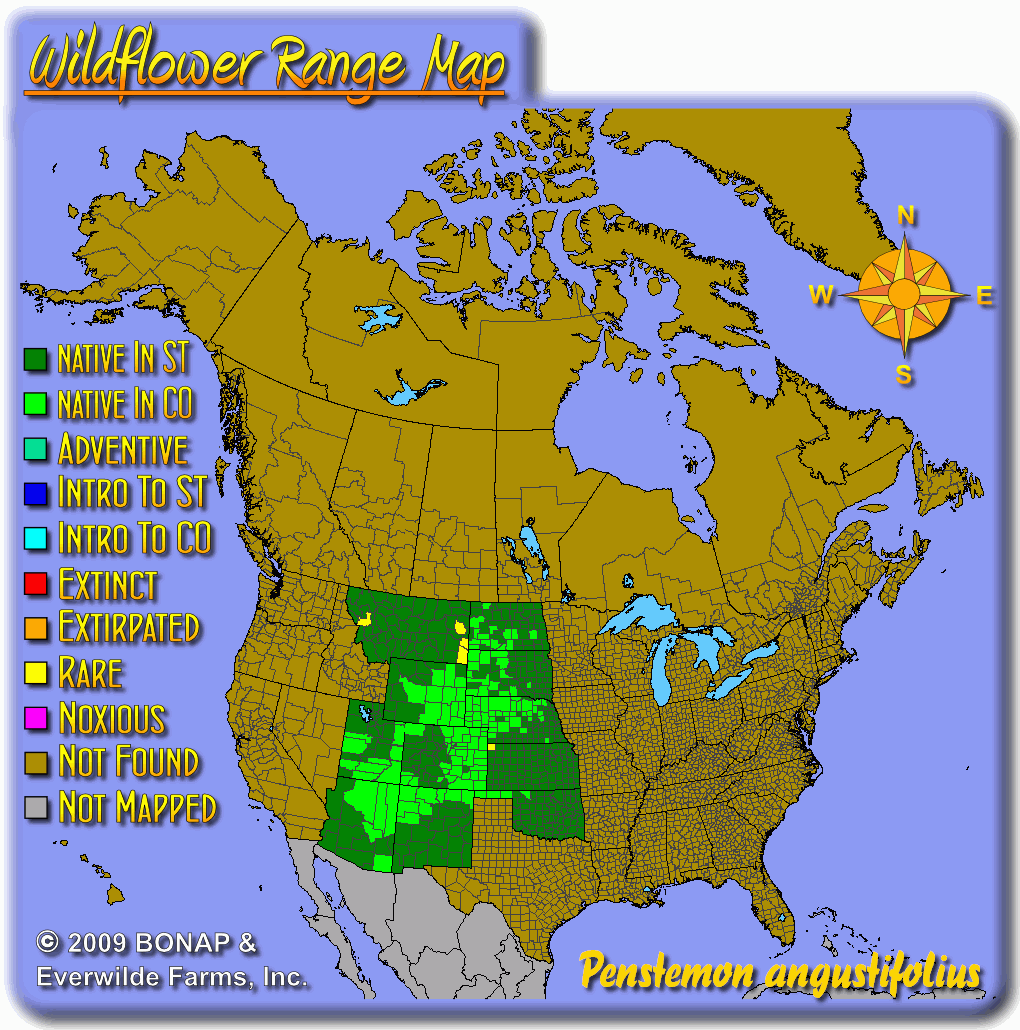Narrow Leaved Beardtongue Seeds
Penstemon angustifolius
- HOW TO GROW
- FAST FACTS
HOW TO GROW
Sowing: Direct sow in late fall, planting just below the surface of the soil. For spring planting, mix the seeds with moist sand and store in the refrigerator for 30-60 days before planting. Keep the soil lightly moist until germination. This seed can also be started indoors 6-8 weeks before planting in the spring.
Growing: Water seedlings occasionally until they become established. Mature plants tolerate drought well, though they appreciate watering in dry weather. Do not overwater, since this plant is particularly susceptible to root rot if the soil becomes too moist. If seeds are not required, cut the plant back after blooming has finished. This plant often self-sows, and is highly attractive to bees, hummingbirds, and butterflies; it grows well in sand and can be used to prevent erosion.
Harvesting: For cut flowers, choose stems with flowers that have just opened. Strip the foliage that will fall below the water level, and place in water immediately.
Seed Saving: After the flowers fade, small pods will form that eventually open at the top to reveal the ripe seeds. Gather the seeds as soon as the pods have begun to open; watch them carefully to prevent loss, since the seeds can easily be blown away by the wind. Store the seeds in a cool, dry place.
FAST FACTS
Common Names: Broadbeard Beardtongue, Sand Beardtongue, Pagoda Penstemon, Narrowleaf Penstemon
Latin Name: Penstemon angustifolius
Species Origin: US Native Wildflower
Type: Native Wildflowers
Life Cycle: Perennial
USDA Zones: 4, 5, 6, 7, 8
US Regions: Mountain, Arid/Desert, Plains/Texas
Seeds per Ounce: 17,000
Stratification: Cold/Wet for 4 Weeks
Germination Ease: Stratify 4 Weeks
Sunlight: Full Sun
Height: 12 Inches
Color: Pink, Purple
Bloom Season: Blooms Late Spring
Uses: Attracts Pollinators, Hummingbirds, Cut Flowers, Deer Resistant
DESCRIPTION

HOW TO GROW
Sowing: Direct sow in late fall, planting just below the surface of the soil. For spring planting, mix the seeds with moist sand and store in the refrigerator for 30-60 days before planting. Keep the soil lightly moist until germination. This seed can also be started indoors 6-8 weeks before planting in the spring.
Growing: Water seedlings occasionally until they become established. Mature plants tolerate drought well, though they appreciate watering in dry weather. Do not overwater, since this plant is particularly susceptible to root rot if the soil becomes too moist. If seeds are not required, cut the plant back after blooming has finished. This plant often self-sows, and is highly attractive to bees, hummingbirds, and butterflies; it grows well in sand and can be used to prevent erosion.
Harvesting: For cut flowers, choose stems with flowers that have just opened. Strip the foliage that will fall below the water level, and place in water immediately.
Seed Saving: After the flowers fade, small pods will form that eventually open at the top to reveal the ripe seeds. Gather the seeds as soon as the pods have begun to open; watch them carefully to prevent loss, since the seeds can easily be blown away by the wind. Store the seeds in a cool, dry place.
FAST FACTS
Common Names: Broadbeard Beardtongue, Sand Beardtongue, Pagoda Penstemon, Narrowleaf Penstemon
Latin Name: Penstemon angustifolius
Species Origin: US Native Wildflower
Type: Native Wildflowers
Life Cycle: Perennial
USDA Zones: 4, 5, 6, 7, 8
US Regions: Mountain, Arid/Desert, Plains/Texas
Seeds per Ounce: 17,000
Stratification: Cold/Wet for 4 Weeks
Germination Ease: Stratify 4 Weeks
Sunlight: Full Sun
Height: 12 Inches
Color: Pink, Purple
Bloom Season: Blooms Late Spring
Uses: Attracts Pollinators, Hummingbirds, Cut Flowers, Deer Resistant




